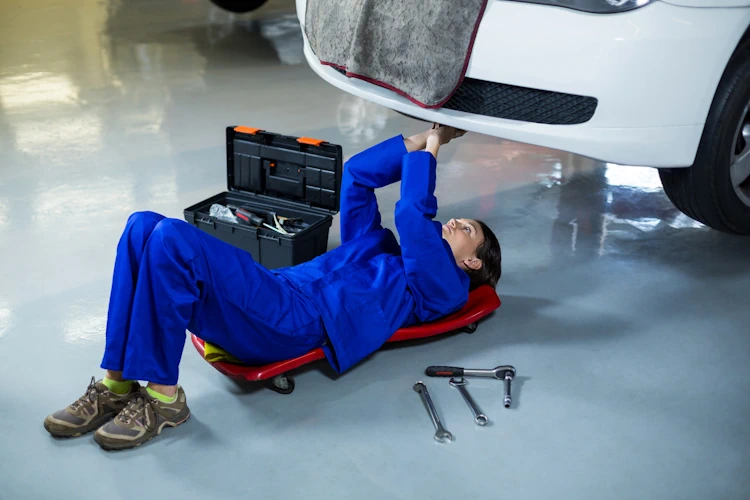In the realm of towing, efficiency and safety are paramount. One crucial aspect often overlooked by many is the proper setup of the tow bar tongue. Whether you’re hauling a trailer, boat, or any other load, optimizing your tow bar tongue setup is essential for a smooth and secure towing experience. In this comprehensive guide, we will delve into the intricacies of tow bar tongue setup, exploring the factors that influence it and providing actionable tips for maximizing efficiency.
Understanding Tow Bar Tongue Setup
Definition and Components
The tow bar tongue setup consists of various components that facilitate the connection between the towing vehicle and the trailer or load being towed. These components typically include the tow bar itself, the coupler, safety chains, and electrical connections for lights and brakes.
Importance of Proper Setup
Proper tow bar tongue setup is not merely a matter of convenience; it is a critical safety consideration. A poorly configured tow bar tongue can lead to instability, swaying, and even accidents. By ensuring the correct setup, you not only enhance safety but also optimize the towing performance of your vehicle.
Factors Influencing Tow Bar Tongue Setup
Weight Distribution
The distribution of weight on the tow bar tongue significantly impacts towing stability. Ideally, the tongue weight should be distributed evenly to prevent excessive strain on the towing vehicle’s rear axle. Proper weight distribution ensures balanced handling and reduces the risk of trailer sway.
Tow Vehicle Specifications
The specifications of the towing vehicle play a crucial role in determining the appropriate tow bar tongue setup. Factors such as towing capacity, wheelbase length, and suspension type must be taken into account to ensure compatibility and safety.
Type of Load
Different types of loads require different approaches to tow bar tongue setup. For instance, hauling a heavy trailer may necessitate the use of weight distribution hitches, while towing a boat might require adjustments to accommodate its unique shape and weight distribution.

Tips for Optimizing Tow Bar Tongue Setup
Calculate Tongue Weight
Accurately calculating tongue weight is the first step towards optimizing your tow bar tongue setup. This can be done using a variety of methods, including specialized tongue weight scales or simple calculations based on the load’s weight distribution.
Adjusting Height and Angle
Proper adjustment of the tow bar tongue’s height and angle is essential for achieving optimal towing performance. Ensuring that the tongue is level and at the correct height minimizes strain on the towing vehicle and promotes stability during towing.
Using Weight Distribution Hitch
For loads that exert significant downward force on the tow bar tongue, such as heavy trailers, a weight distribution hitch can be invaluable. These hitches redistribute weight from the rear axle of the towing vehicle to its front axle and the trailer axles, enhancing stability and control.
Implementing Sway Control
Sway control mechanisms, such as sway bars or friction sway controls, help mitigate the side-to-side movement of the trailer, commonly known as sway. By reducing sway, these devices enhance towing safety and confidence, particularly in adverse weather conditions or when passing other vehicles.
Regular Maintenance
Maintaining your tow bar tongue components is crucial for ensuring long-term reliability and performance. Regular inspections, lubrication, and replacement of worn parts are essential practices to prevent unexpected failures and maintain towing safety.
Case Studies and Examples
To illustrate the real-world impact of proper tow bar tongue setup, let’s consider a few hypothetical scenarios:
- Scenario 1: Heavy Trailer Hauling
- In this scenario, a truck equipped with a weight distribution hitch effectively distributes the tongue weight of a heavy trailer, resulting in stable and controlled towing even at high speeds.
- Scenario 2: Boat Towing
- Adjustments to the tow bar tongue setup accommodate the unique weight distribution of a boat, ensuring smooth launching and retrieval at the boat ramp without compromising towing stability.
FAQ Section
How do I calculate tongue weight for my tow bar setup?
Calculating tongue weight can be done by measuring the weight exerted on the tow vehicle’s hitch when the trailer is fully loaded. Specialized tongue weight scales or formulas based on load distribution can also provide accurate estimates.
Can I use the same setup for different types of loads?
While some aspects of tow bar tongue setup may remain consistent across different loads, it’s essential to adjust your setup according to the specific requirements of each load, including weight distribution and towing dynamics.
What role does the tow vehicle’s suspension play in tow bar tongue setup?
The tow vehicle’s suspension influences its ability to handle the weight and dynamics of the towed load. Vehicles with stiffer suspensions may require different setup adjustments compared to those with softer suspensions.
Are there any specific regulations or guidelines I need to follow when adjusting my tow bar tongue setup?
Regulations regarding tow bar tongue setup may vary depending on your location and the type of load you’re towing. It’s crucial to familiarize yourself with local towing laws and guidelines to ensure compliance and safety.
How often should I inspect and maintain my tow bar tongue components?
Regular inspection and maintenance of tow bar tongue components are recommended, particularly before embarking on long trips or towing heavy loads. Inspect for signs of wear, corrosion, or damage, and address any issues promptly to prevent safety hazards.